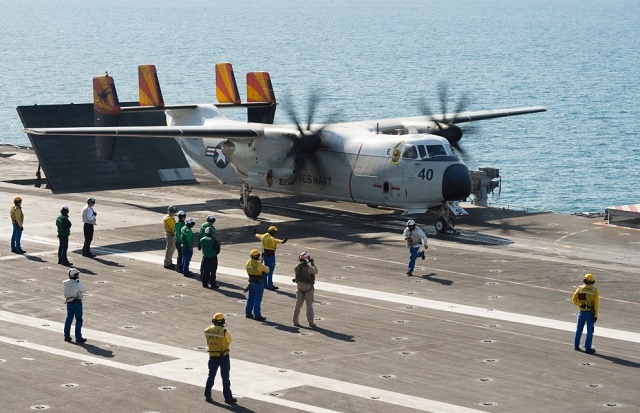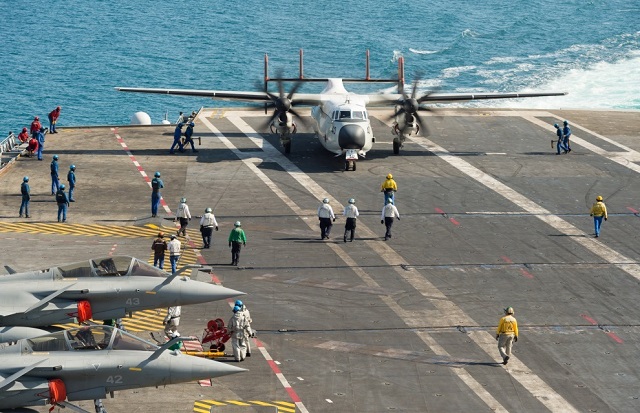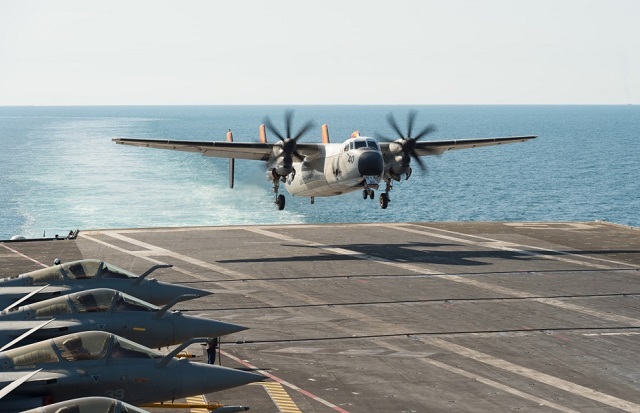 The C-2A Greyhound about to be launched from aircraft carrier Charles de Gaulle Picture: C.Cavallo©Marine Nationale |
|||
The
presence of American sailors aboard the French aircraft carrier also contributed
in the success of this requalification. A Landing Signal Officer (LSO)
from aircraft carrier Harry S. Truman was present on board. The American
LSO gave his expertise to his French counterparts on how to guide the
C-2 aircraft type during the final landing phase. The French aircraft
handling teams got familiarized again in the movements and specific employment
characteristics of the C-2 on the Charles de Gaulle flight deck. |
|||
 The C-2A Greyhound maneuvers at the stern of aircraft carrier Charles de Gaulle Picture: C.Cavallo©Marine Nationale |
|||
Back
in June 2011 two US Navy C-2A(R) Greyhounds from VRC-40 conducted several
operational carrier
on-board delivery (COD) missions for the French aircraft carrier
operating in the Mediterranean Sea during the NATO intervention in Libya. The C-2A Greyhound transport aircraft is a derivative of the E-2C Hawkeye airborne early warning (AEW) aircraft. They share the same wings and power plants but the C-2A has a larger fuselage and a rear loading ramp. The Greyhound provides logistical support missions between ground and aircraft carriers. Powered by two 5000 hp Allison T56-A-425 turboprops engines, they can carry up to 26 passengers and four tons of cargo. The US Navy will replace its C-2A aircraft with a Navy variant of the V-22 tilt-rotor aircraft to answer its future Carrier Onboard Delivery requirements. |
|||
U.S. Navy C-2A Crew Conducted Qualification Flights with French Navy Aircraft Carrier
- Posted On











